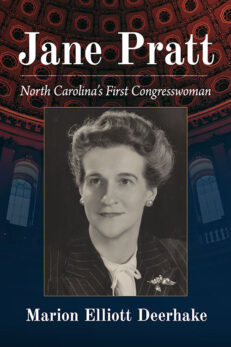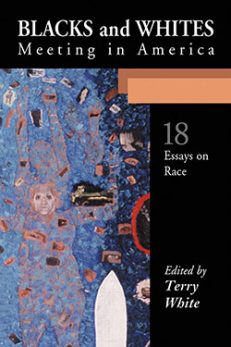Blacks and Whites Meeting in America
Eighteen Essays on Race
$39.95
In stock
About the Book
“In white memory, which has been the dominant memory, blacks are usually absent. They just do not figure in the American story, except as slaves, as reminders of guilt. And nobody likes to be reminded of guilt”—David K. Shipler, A Country of Strangers: Blacks and Whites in America.
On September 14, 2001, Kent State University’s Ashtabula Campus sponsored its colloquium on race based on David K. Shipler’s A Country of Strangers by the Pulitzer Prize–winning author of Arab and Jew. This collection of 18 papers explores such topics as blacks and whites in the performing arts; racial profiling; racism in American baseball; race, work and wholeness; musical style as a symbol of black cultural identity; the early Newberry Library in Chicago; the use of the body by artists to reveal the mind; Southern white ministers at mid-century; building a diverse and respectful campus community; organizational changes creating a new climate for racial equality; the missing voice of the Spanish–speaking in the black-white dialogue; the concept of equality of educational opportunity for African Americans; and praises, criticism and comments for A Country of Strangers: Blacks and Whites in America.
About the Author(s)
Bibliographic Details
Edited by Terry White
Format: softcover (6 x 9)
Pages: 251
Bibliographic Info: photos, references, index
Copyright Date: 2003
pISBN: 978-0-7864-1541-0
eISBN: 978-1-4766-1172-3
Imprint: McFarland
Table of Contents
Acknowledgments vii
Preface 1
Opening Remarks of the David K. Shipler Colloquium on Race 5
PART I: RACE, THE UNIVERSITY, AND AFFIRMATIVE ACTION
1. Ideology versus Historic Truth: The Concept of Equality of Educational Opportunity for African Americans 7
2. Building a Diverse and Respectful Campus Community: A Systematic Approach Model 26
3. Veiled Diversity: A New Look at What Diversity Means Within the Academy 46
PART II: RACE AND IDENTITY IN THE ARTS, POPULAR CULTURE, AND SPORTS
4. From Jackie Robinson to Sammy Sosa: Baseball and Race in America 51
5. Two Contemporary African-American Artists 68
6. Musical Style as a Symbol of Black Cultural Identity 81
7. When Whites and Blacks Met: Performing Artists on Stage and in Film 92
8. Looking for Jackie and Mike: Race, Sport, and Contemporary American Culture 101
PART III: THE PAST AS PROLOGUE: RACE IN THE MINISTRY, THE LIBRARY, THE ACADEMY, AND ON THE CAMPUS
9. Southern White Ministers at Mid-Century 111
10. The Founding and Early History of Chicago’s Newberry Library: Free to Whom? 120
11. From Myrdal to Shipler: The Academy’s View of Blacks and Whites in America 126
12. What’s in a Name? Politically Correct Language On and Off Campus 137
PART IV: BUILDING AN ECONOMIC BRIDGE ACROSS THE RACIAL DIVIDE
13. Organizational Changes Create a New Climate for Racial Equality 145
14. Dreaming Beyond the Number Two: Race, Work, and Wholeness 162
PART V: THE EXPANDING AND CONTRACTING KINSHIP OF RACE
15. The Strangest of Kin: Blacks and White in America Viewed from the Borderlands 175
16. Let the Dialogue Begin 185
17. Racial Profiling: Good Policing or Discriminatory Policy? A Look at the Existing Literature 199
Part VI: DAVID K. SHIPLER ADDRESS
18. Introduction 211
19. “When I Go to Work, I Have to Leave My Culture at the Door…” 213
About the Contributors 231
Index 235





